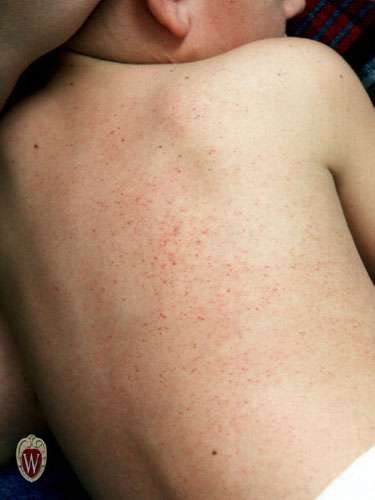

paleness in the mucous membranes, such as inside the cheeks.Sores, oral infections, and other symptoms may be early signs of leukemia. A doctor may prescribe antihistamines or other medications. There is no specific treatment for mastocytosis that occurs with leukemia. If the symptoms do not improve in 5–15 minutes, or they come back, use a second pen if the person has one. Some people may need more than one epinephrine injection. Stay with them until the emergency services arrive.If they have vomited, turn them onto their side. Lay the person down from a standing position.Dial 911 or the number of the nearest emergency department.If they are, follow the instructions on the side of the pen to use it. Check whether they are carrying an epinephrine pen.The symptoms develop suddenly and include:

This is a life threatening emergency in which an allergic reaction causes severe symptoms, including difficulty breathing.Īnaphylaxis is a severe allergic reaction that can be life threatening.
#SMALL TINY PINPOINT RED DOTS ON SKIN SKIN#
Skin changes can affect the face, neck, chest, and back.

If chemotherapy and other treatments for leukemia are effective, the symptoms of leukemia cutis will disappear. With deeper lesions, the skin color may not change. As with petechiae and purpura, they may be more visible on lighter areas, such as the hands and feet. On darker skin, they can be harder to see. The lesions may be red, brown, yellow, blue, gray, or purple. erythroderma - a widespread skin inflammation that can be life threatening.erythema, which makes the skin look red or darker in color, depending on the person’s skin tone.The skin develops small bumps that look like a rash. It is more likely with chronic lymphocytic leukemia and acute myeloid leukemia (AML) but can occur with other types. Leukemia cutis can occur in the later stages of leukemia. Why else might a person bleed easily? Leukemia cutis However, these bruises are different from petechiae. they take longer than usual to disappearĪs with petechiae, the body cannot prevent blood vessels from bleeding under the skin when an injury occurs.there are many bruises, or they happen often.they appear in unusual places, such as the back or hands.they happen even after a small knock, or a person cannot remember doing anything to cause them.A person may notice them before they receive a diagnosis.īruises are common after an injury, but they may be a sign of leukemia if: Easy bruisingĮasy bruising and bleeding are common symptoms of leukemia.

Petechiae and purpura do not need specific treatment. Petechiae and purpura will not change color, but a rash will turn white. To distinguish petechiae from a skin rash, a person can press down on the affected area using a finger or thumb. On darker skin, they can be harder to spot, but they may be easier to see on lighter areas, for example, the soles of the feet or palms of the hands. Petechiae and purpura may appear red, purple, or brown. As a result, the blood can leak out into the skin. As platelet levels fall, it becomes harder for them to block any burst capillaries. Leukemia disrupts the production of platelets, which usually enable blood to clot. Petechiae and purpura can be early signs of leukemia, although they may happen for many other reasons. Petechiae are tiny spots that happen when small blood vessels called capillaries break under the skin. Here are some of the skin rashes and symptoms a person may experience with leukemia.


 0 kommentar(er)
0 kommentar(er)
